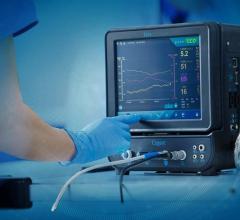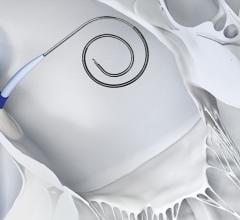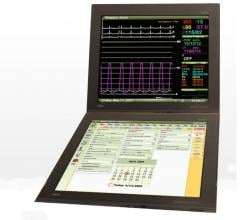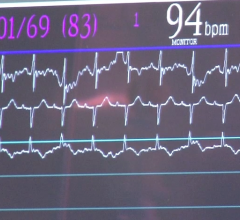June 2, 2010 – Heart failure patients whose treatment was guided by pulmonary artery pressures obtained through a tiny, permanent wireless implant had a 30 percent reduction in hospitalization rates at six months. This was the result of the CHAMPION (CardioMEMS Heart Sensor Allows Monitoring of Pressure to Improve Outcomes in New York Heart Association (NYHA) Class III patients) trial, which met its met its primary efficacy endpoint by reducing heart failure hospitalizations. The results were presented this week at the European Society of Cardiology Heart Failure Congress 2010 in Berlin, Germany, by the principal investigators of the trial: William Abraham, M.D., director of the division of cardiovascular medicine at The Ohio State University Medical Center, and Philip Adamson, M.D., director of the Heart Failure Institute at the Oklahoma Heart Hospital. The study was sponsored by CardioMEMS Inc., a medical technology company that has developed a novel wireless sensing and communication technology for the human body. Need for the Device CHAMPION evaluated the safety and effectiveness of the CardioMEMS heart failure (HF) pressure measurement system in NYHA Class III heart failure patients; these patients experience symptoms of heart failure with only mild exertion. NYHA Class III represents roughly 1.5 million of the 6 million heart failure patients in the United States, and historically accounts for nearly half of all heart failure hospitalizations.
The trial enrolled 550 patients, who had been hospitalized for heart failure in the previous year, at 63 leading heart centers in the United States. All subjects received the CardioMEMS CHAMPION HF sensor as a permanent pulmonary artery implant and were then randomized to the treatment or control group before discharge. Prior to enrollment in the CardioMEMS trial, these patients were being treated by heart failure specialists at leading centers and were receiving optimal drug, device and disease management therapy. The reduction in the risk of a heart failure related hospitalization at six months was 30 percent and the impact on hospitalizations continued to increase over time, reaching 38 percent per year over the full duration of the trial. The average patient follow-up was 15-1/2 months. The safety profile of the device was positive: none of the implanted sensors needed to be removed or replaced and all were functioning throughout the course of the trial. "Pulmonary artery pressure monitoring using the CardioMEMS CHAMPION pressure monitoring system represents our first meaningful improvement for the management of heart failure in nearly a decade," said Abraham. "We were pleased to see that the patient benefit was robust and durable and actually increased beyond the primary endpoint of 6 months; this is a key point for patients, doctors and the health care system." Adamson added, "The CHAMPION trial illustrates how close monitoring of patients with chronic heart failure can reduce the need for costly and dangerous hospitalization while improving quality of life. These trial results hold great promise for patients suffering from chronic symptomatic heart failure." The Device The CHAMPION wireless HF sensor is an innovative miniature device that is implanted into the patient's pulmonary artery using a simple, catheter-based procedure. The pulmonary artery pressure is then measured and displayed using the CardioMEMS proprietary electronic monitoring system. Following the procedure, patients perform wireless measurements of their pulmonary artery pressure from home. The pressure data is immediately transmitted to a secure database and is available for review by the patient's physician or nurse on the CardioMEMS CHAMPION website. For more information: www.cardiomems.com


 November 14, 2023
November 14, 2023 






